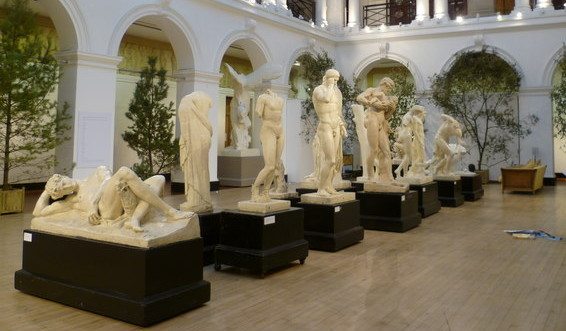Warwick Researchers Help Solve Renaissance Whodunnit
For several hundreds of years, the 16th century Rothschild Bronzes have been at the centre of a ‘Renaissance whodunnit’. The pair of sculptures, each depicting a naked man riding a black panther, have been attributed to several artists over the centuries but no definite culprit has ever been decided on. The mystery remained unsolved and the Bronzes slid into relative obscurity. That changed however in February 2015, when a team from Cambridge University proposed that the two Bronzes were in-fact made by Renaissance superstar Michelangelo.
During autumn of last year, Prof Paul Joannides, Emeritus Professor of Art History at the University of Cambridge, connected the Bronzes to a seemingly insignificant drawing made by one of Michelangelo’s apprentices. This discovery, alongside further research and initial scientific analysis, led to the proposal that the Bronzes were made by the hand of Michelangelo, just after he completed the marble David and just before he was about to begin his famous paintings on the ceiling of the Sistine Chapel.
Following this discovery, engineers and imagers from the University of Warwick’s Warwick Manufacturing Group, as well as anatomists from Warwick Medical School, have been helping art historians from the University of Cambridge uncover more information on the mysterious Renaissance bronzes. The latest technology was used during their investigations, from neutron imaging to 360 degree laser scanning and 3D printing.
Firstly, a scientific examination of the sculptures’ anatomy was provided by Professor Peter Abrahams, Clinical Anatomist at Warwick Medical School. His analysis of the sculptures concluded that extensive anatomical knowledge would have been required to produce “such anatomically accurate nude figures”. This knowledge would have had to been acquired through the dissection of a human body.
As Abrahams notes, only two artists of the time had such anatomical knowledge through the dissection of human bodies- Leonardo Da Vinci and Michelangelo.
The evidence continues to pile up though, as Abrahams went on to identify features of the figure’s detailed anatomy that are distinctive to the Michelangelo’s other sculptures- some of which “could be characterised as signature details”. This included “a stunning accuracy for over thirty muscles and bony points” depicted in a slight ‘hyper-anatomised’ style, which appears in many of Michelangelo’s other expressive drawings and sculptures of the male body.
Additionally, a team led by Professor Mark Williams from Warwick Manufacturing Group travelled to Cambridge to laser scan one of the original sculptures and create an exact 3D digital model. In order to achieve this, the scanner used was so accurate it can resolve features to below 100 microns (a micron being one millionth of a metre) and is usually reserved for scanning highly precise engineering parts.
The high resolution laser scan of the two sculptures obtained by Williams and his team was then used by Propshop, a 3D modelling and printing company based at Pinewood film studios. They created 3D printouts of the Rothschild Bronzes, both at full-scale and reduced-scale.
Andrew Lacey, a contemporary sculptor and bronze-caster, went on to produce moulds from both 3D printouts, and used these to create replicas of the two sculptures. To create the replicas, he used alloys as close as possible to the originals, and used an old-fashioned furnace- similar to the one that Michelangelo would have used in 16th century Italy. His aim was to establish why casts of the original models lose most of the detail and gain an insight into the bronze-making process of the early 16th century.
To further understand the complex casting process, Dr William Griffiths from the Metallurgy and Materials Department at Birmingham University took real-time X-ray videos while the molten bronze was poured into Lacey’s moulds, to record precisely how the liquid metal flows around the mould. The work done on Lacey’s replicas provides a valuable glimpse into the bronze-making process of the 16th century and also the creation of the Rothschild bronzes- an endeavour made possible by the contribution of Professor Mark Williams and his team from Warwick Manufacturing Group.
Thanks to the collaboration between several groups of people, from art historians to Warwick’s anatomists and engineers, as well as the use of the most advanced equipment and imaging technologies, an answer has begun to emerge to the mystery of the Rothschild Bronzes. This joint venture between art and science has not only shed light on a hundred-year old mystery but has also perhaps found Michelangelo’s only surviving Bronzes- a discovery that is unquestionably invaluable.

Comments